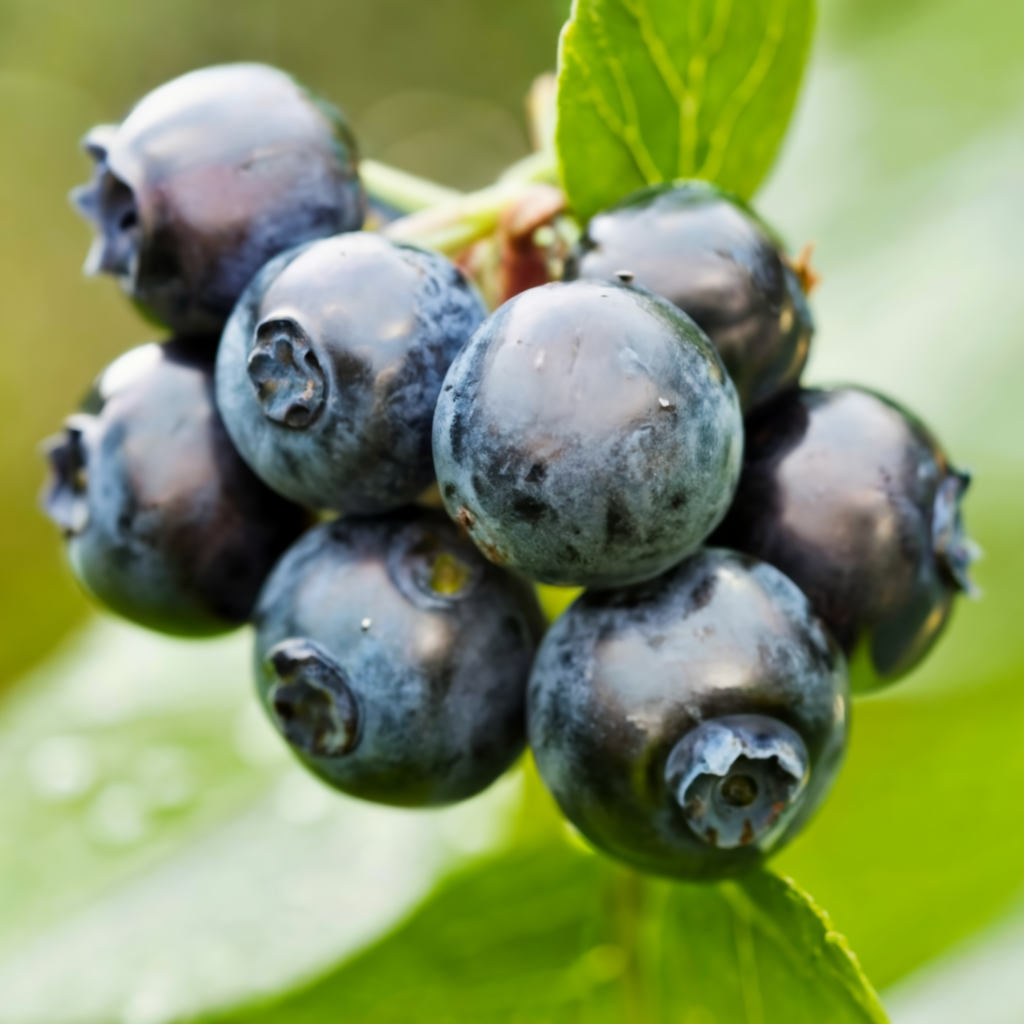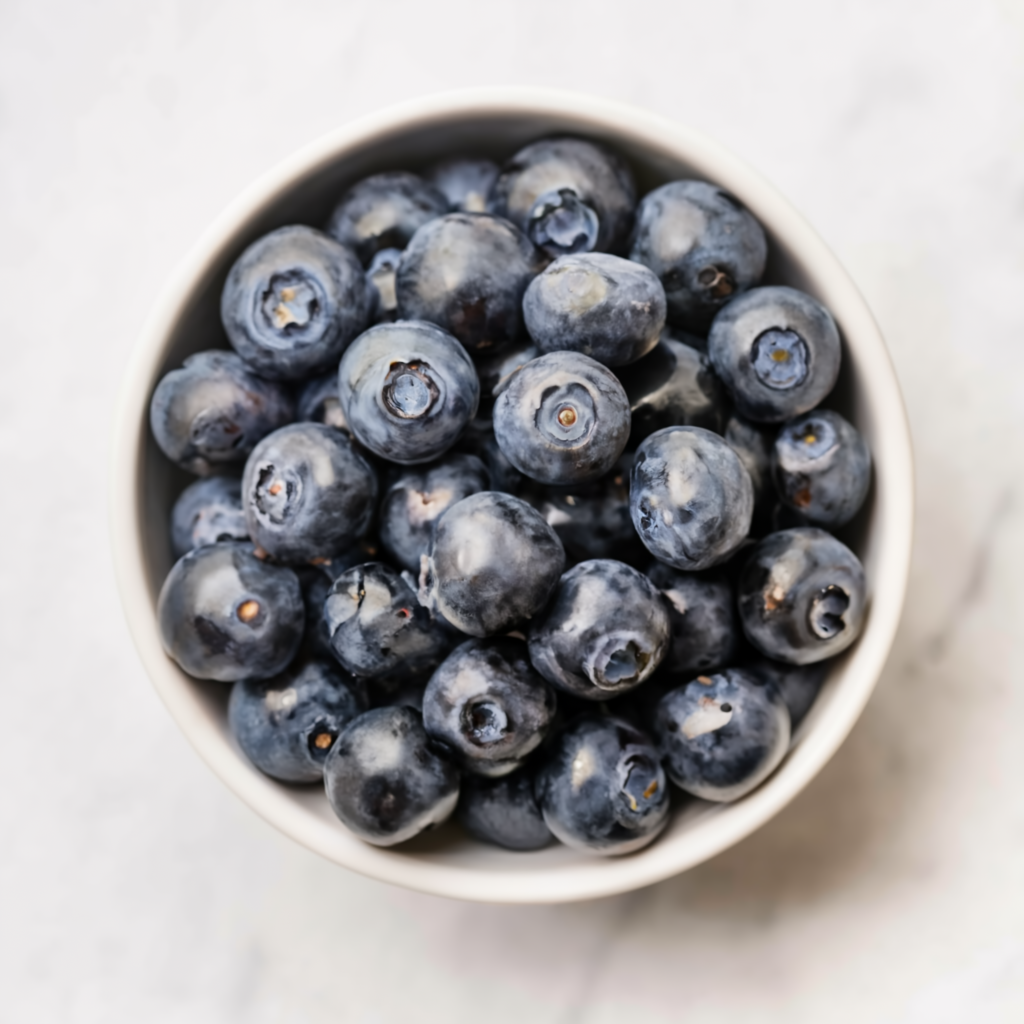
Blueberries are not only delicious but also packed with numerous health benefits, making them a superfood highly recommended by nutritionists and health experts alike.
The health benefits of blueberries are extensive, from their antioxidant properties and heart health benefits to their ability to improve brain function and lower the risk of diabetes. Incorporating blueberries into your diet is a delicious and effective way to improve overall health.
Blueberries are versatile and can be eaten fresh, frozen or cooked. They make a great addition to smoothies, yoghurt, oatmeal, or salads. Because of their sweet flavour, they’re also popular in desserts and baked goods, though consuming them raw maximizes their health benefits.

General info about blueberries
Blueberry is not a particular species; the name is used for a group of flowering plants in the section Cyanococcus in the genus Vaccinium that develop blue or purple berries. Not all plants in the genus Vaccinium are blueberries; this genus also includes closely related berries such as cranberries, huckleberries, and bilberries. (Bilberries of the species Vaccinium myrtillus are known as European blueberries.)
Examples of blueberry species
- Vaccinium angustifolium (lowbush blueberry)
- Vaccinium boreale (northern blueberry)
- Vaccinium caesariense (New Jersey blueberry)
- Vaccinium corymbosum (northern highbush blueberry)
- Vaccinium darrowii (evergreen blueberry)
- Vaccinium elliottii (Elliott blueberry)
- Vaccinium formosum (southern blueberry)
- Vaccinium fuscatum (black highbush blueberry; syn. V. atrococcum)
- Vaccinium hirsutum (hairy-fruited blueberry)
- Vaccinium myrsinites (shiny blueberry)
- Vaccinium myrtilloides (sour top, velvet leaf, or Canadian blueberry)
- Vaccinium pallidum (dryland blueberry)
- Vaccinium simulatum (upland highbush blueberry)
- Vaccinium tenellum (southern blueberry)
- Vaccinium virgatum (rabbiteye blueberry; syn. V. ashei)
Blueberry production
Commercial blueberry enterprises are usually specialized in either Norther American wild blueberries (lowbush) or North American cultivated blueberries (highbush). Canada is the largest producer of lowbush blueberries, while the United States is the largest producer of highbrush blueberries.
Lowbush blueberries are commonly marketed as wild blueberries even when they are farmed, as a way of distinguishing them from highbrush blueberries.
The northern highbrush blueberry
The most commonly cultivated blueberry in North America is the northern highbrush blueberry – Vaccinium corymbosum. This species is native to eastern Canada and the eastern and southern United States, an area stretching from Ontario eastward to Nova Scotia in Canada, and south as far as Florida and eastern Texas in the United States.
It is known under many different names, such as high blueberry, blue huckleberry and swamp blueberry. The shrub typically reaches a height of 6-12 feet. The berries are ¼ to ½ inch in diameter, with a blue-black outer colour.
Different cultivars have been developed based on harvest season. Duke, Reka and Spartan are all examples of northern highbrush blueberries that can be harvested eary. Bluecrop, Blu-ray and KaBluey are mid-season blueberries, while Chandler, Elliot and Aurora are harvested later.

Health effects of Northern highbrush blueberries
Most of the research regarding the health effects of blueberries are carried out using Northern highbrush blueberries. This does not mean that they are superior to other blueberries; only that most of the research is done using the most commonly grown blueberrry.
High in Nutrients
Blueberries are low in calories but high in nutrients. A cup (about 148 grams) of blueberries contains 4 grams of fiber, 24% of the Recommended Daily Allowance (RDA) for Vitamin C, 36% of the RDA for Vitamin K, and 25% of the RDA for Manganese. They’re also rich in antioxidants and phytoflavinoids.
Antioxidant-Rich
Blueberries has a very high antioxidant capacity compared to the average for commonly consumed fruits and vegetables. The main antioxidant compounds are flavonoids, with anthocyanins being the most prominent, giving blueberries their blue color. These antioxidants neutralize free radicals, protecting the body from aging and various diseases.
Oxidative DNA damage is part of everyday life and a major factor in the aging process and cancer development. The antioxidants in blueberries are shown to protect cells from DNA damage, reducing the risk of disease.
Protect Cholesterol in the Blood
Oxidation of low-density lipoprotein (LDL) cholesterol is a step in the heart disease process. The antioxidants in blueberries have been found to protect cholesterol in the bloodstream from becoming damaged, contributing to heart health.
Lower Blood Pressure
Blueberries appear to have significant benefits for people with high blood pressure, a major risk factor for heart disease. Regular consumption of blueberries has been linked to reductions in blood pressure in numerous studies.
Improve Brain Function
Eating blueberries may delay brain aging and improve brain function. The anthocyanins in blueberries can have positive effects on neuronal signaling in brain centers, enhancing memory and cognitive processes. Studies have shown that blueberries can improve memory in older adults.
Anti-Diabetes Effects
Blueberries are relatively low in sugar compared to other fruits. They have bioactive compounds that can improve insulin sensitivity and glucose metabolism, which can lower the risk of type 2 diabetes. Eating blueberries can directly impact insulin resistance, benefiting blood sugar control.
Fight Urinary Tract Infections
Similar to cranberries, blueberries contain substances that can prevent certain bacteria from binding to the wall of the bladder, which may help prevent urinary tract infections (UTIs).
Support Muscle Recovery
Exercise can lead to muscle fatigue and soreness, partly caused by local inflammation and oxidative stress in the muscle tissue. Blueberry supplementation may reduce the damage that occurs at the molecular level, minimizing soreness and reduced muscle performance.

